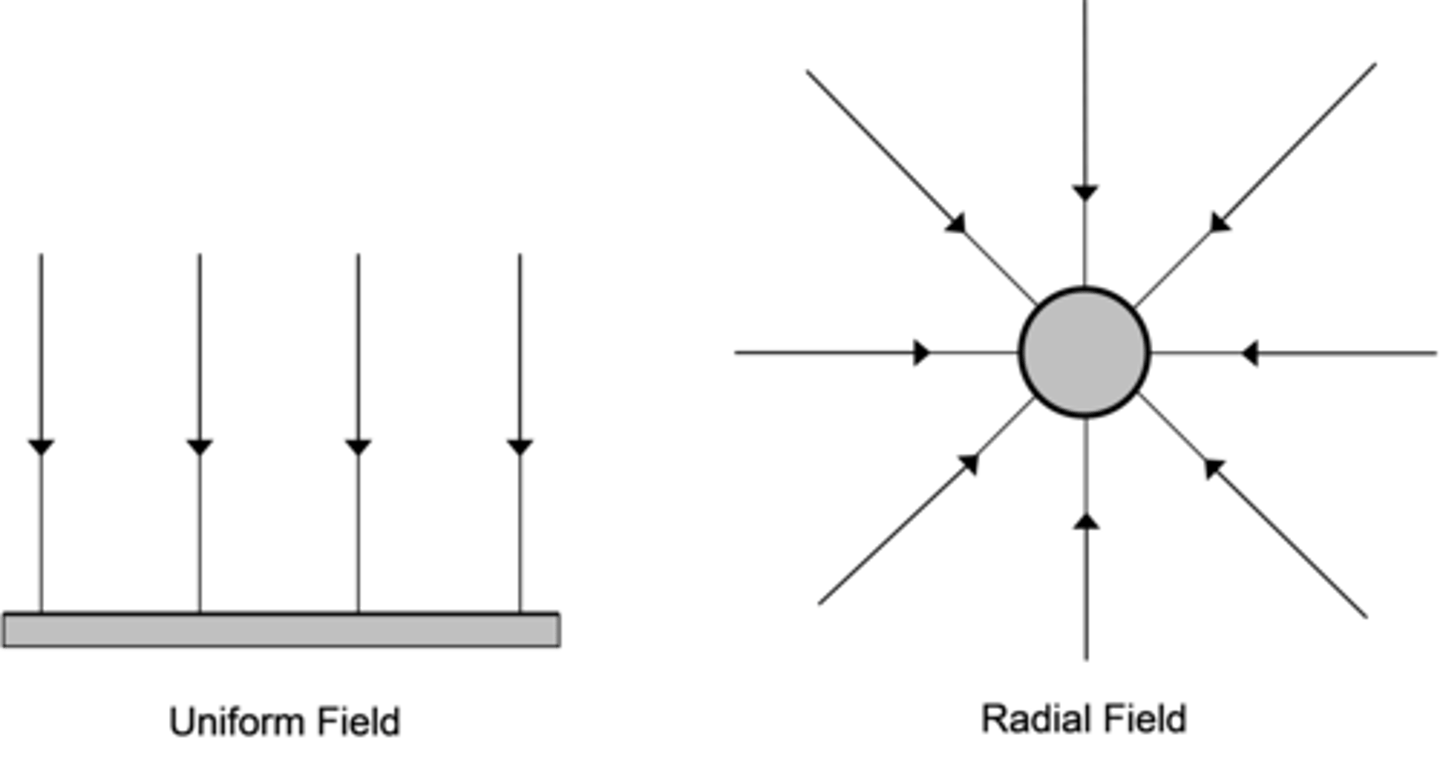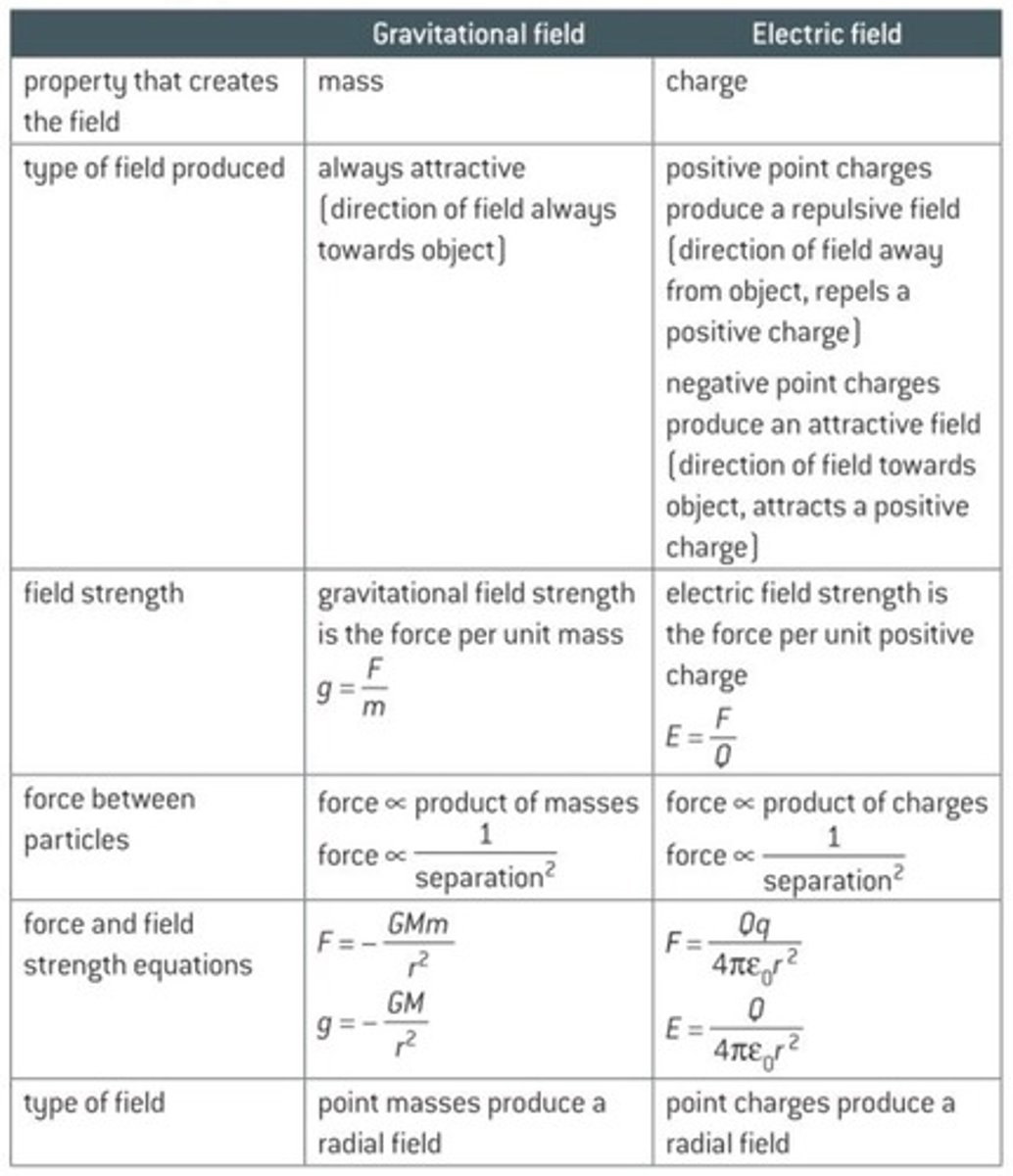Key Points : Gravitational Fields
1/5
There's no tags or description
Looks like no tags are added yet.
Name | Mastery | Learn | Test | Matching | Spaced |
|---|
No study sessions yet.
6 Terms
A force field is a region in which a body experiences a non-contact force.
Gravitational fields are regions where objects with mass experience an attractive force due to gravity.
This force is determined by Newton's Law of Gravitation, which states that:
‣ The force is directly proportional to product of the masses involved
‣ The force is inversely proportional to the square of the separation between two masses
As an equation this is:
F = GMm/r²
(G = Gravitational Constant)
Field lines can be drawn to represent a gravitational field. The lines:
‣ Always point towards the centre of the mass producing the field
‣ Show the direction in which a mass would experience a force if placed at a point in that field
‣ Are closer together at points where the field is stronger
‣ Are further apart at points where the field is weaker
‣ Never cross over each other

A useful way to compare gravitational fields is by comparing gravitational field strengths. Gravitational field strength is defined as the attractive gravitational force that a unit mass would experience, at a given point in the field.
The gravitational field strength at the surface of Earth is roughly 9.81 N/kg. This means that a mass of 1kg would experience a force of 9.81N.
As an equation, gravitational field strength is:
g = F/m
which for a radial field gives...
g = GM/r²
Gravitational potential at a point is the amount of work done in moving a unit mass from infinity to that point in a gravitational field.
As an equation this is:
V = -GM/r
‣ Gravitational potential is defined as being zero at infinity
‣ Work is done to move an object closer to the centre of the field, and so gravitational potential is always a negative value.
‣ Equipotentials are planes containing points with equal gravitational potential. This means that the amount of work done when an object is moved around these planes is zero.
Orbits:
The orbits of planets and satellites are a result of the gravitational force produced by the body they are orbiting. This force acts as a centripetal force, which results in circular motion. There are many different types of orbit.
Know that:
‣ Synchronous orbits have a time period of one day, and so return to the same place in the sky each day.
‣ Low orbits at heights of between 160 km and 2000 km.
‣ Geostationary orbits have a time period of one day and stay over the same point on the Earth's surface. They must be directly above the equator and travel in the same direction as the earth's rotation.
Gravitational Fields:
Similarities:
‣ Gravitational field strength (g) is a force per unit mass.
‣ Newton's Law of gravitation for force between 2 masses is an inverse square law.
‣ The field lines around a point mass show the force acting on a point mass, and is 0 at infinity.
‣ Gravitational potential (V₉ᵣₐᵥ) is the potential energy per unit mass, and is 0 at infinity.
Differences:
‣ Forces are always attractive.
‣ Objects cannot be shielded from the field.
‣ The size of the force doesn't depend on the medium between masses.
Electric Fields:
Similarities:
‣ Electric field strength (E) is force per unit +ve charge.
‣ Coulomb's Law for electric force between 2 +ve point charges is an inverse square law.
‣ The field lines around a point charge show the force acting on a positive point charge.
‣ Electric potential (V) is the potential energy per unit positive charge, and is 0 at infinity.
Differences:
‣ Force can be attractive or repulsive.
‣ Objects can be shielded from the field.
‣ The size of the force does depend on the medium between charges.
